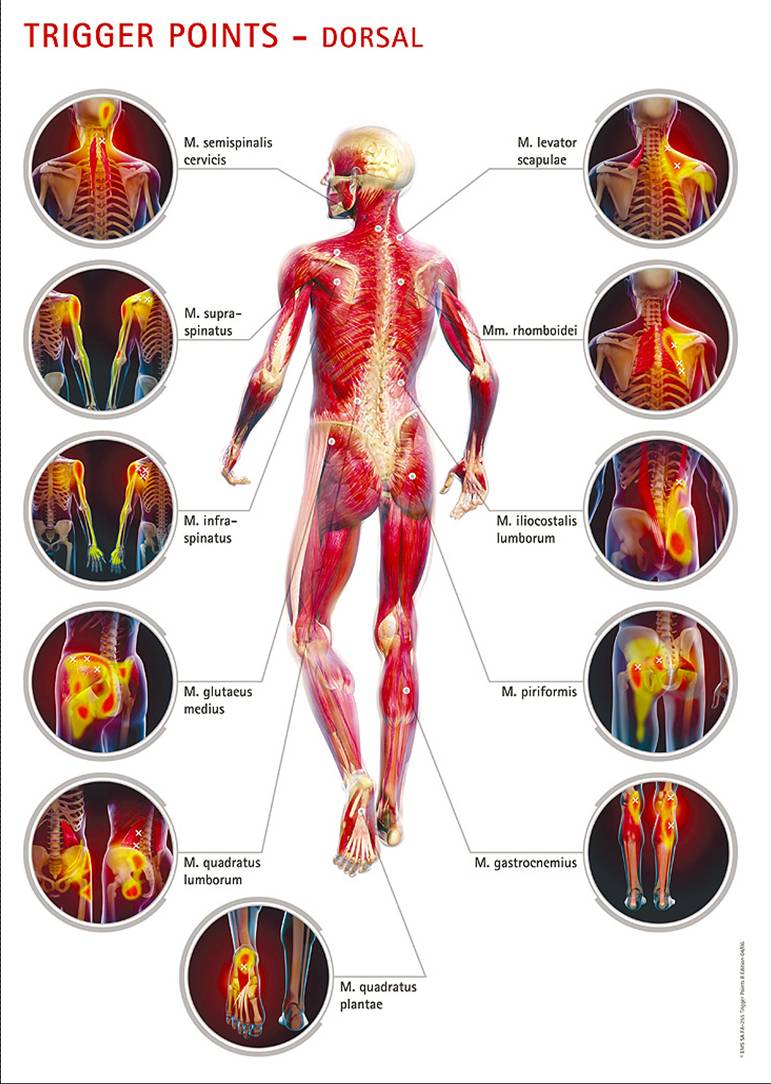Trigger Point Massage
One of my preferred massage technique is trigger point massage. A trigger point is a tight area within muscle tissue that causes pain in other parts of the body. A trigger point in the back, for example, may reduce referral pain in the neck. The neck, now acting as a satellite trigger point, may then cause pain in the head. The pain may be sharp and intense or a dull ache.TPs are known to cause or contribute to headaches, neck and jaw pain, low back pain, the symptoms of carpal tunnel syndrome and tennis elbow, and many kinds of joint pain mistakenly ascribed to arthritis, tendonitis, bursitis, or ligament injury.
What else can I do or avoid to achieve lasting recovery?
Learn respect for your muscles. They were not designed to be held for long periods in a sustained contraction or in a fixed position. Vary your tasks each day. Lift very carefully.
Slow your working pace, and take short rests frequently, especially if feeling muscle fatigue.
Do a daily program of passive stretches that puts the affected muscles through a full range of movement, and repeat the stretches throughout the day. Be like the cat-- it rarely tries to walk after a sleep without first stretching smoothly and slowly.
Massage any TPs up to a dozen times a day, for a minute at a time, as described above.
Learn relaxation techniques, [eg yoga, meditation].
Always watch your posture when sitting, reading, using the computer car or phone. Don't stay too long in any one position.
Work out what particular postures, movements and activities stir up your TPs. If you don't have to do that activity, then don't. If you do, then modify how its done.[eg use the other hand].
Avoid getting the muscles cold, by wearing an extra warm layer of clothing, and adjusting heating etc.
Correct any imbalances in your diet, and take vitamin and mineral supplements as recommended by your doctor.
Family First Chiropractic 142 Erickson Dr Red Deer, AB. Guy Lacoursiere R.M.T. T.P.T is here on Monday, Wed-Fri. 403-347-3261. www.family1stchiro.ca


http://www.pain-education.com/trigger-points.html

